This is an alley that slips behind the back of the modern Outernet building and was the scene of a disaster in 1980 that killed 37 people.
Denmark Place runs behind the shops that front onto Denmark Street, and both were developed in the late 17th century and are named after Prince George of Denmark. The land on which Denmark Place stands was formerly part of the grounds of St Giles Hospital, founded as a house for lepers in the early 12th century by Henry I’s wife Matilda (Maud).
Seized by King Henry VIII as part of the dissolution of the monasteries, it was sold to John Dudley, 1st Duke of Northumberland. He was later executed as part of the plot to put Lady Jane Grey on the throne, although his grandson, Robert Dudley was to regain the fortune as he became Queen Elizabeth I’s favourite.
The estate in this part of London was recorded as being sold again for development in the early 1600s, possibly by Robert Dudley’s illegitimate son, although unhelpfully called Robert, who inherited the wealth but not the title, and decided to leave England in 1603.
It’s not known what happened then, but around 80 years later, the area was developed into housing, with Denmark Street, and the rear alley laid out in the middle of the 1680s. It was to become part of the notorious slums around St Giles, and although they were cleared in the end of the 19th century, Denmark Place was largely untouched, retaining its Georgian era buildings.
A curio is that Denmark Place, although running next to Denmark Street was originally called Dudley Court, after John Dudley, and only renamed Denmark Place in the early 1800s.
The area became known as Little Tokyo in the 1930s as a number of Japanese businesses set up shops and restaurants, although it’s now far more famous for the music shops that line Denmark Street.
The alley, Denmark Place was a narrow slip of a space behind the shops, but gained some notoriety in 1980s when a devastating fire killed 37 people.
At the time of the fire, the Sunday Times wrote, “If it was arson, it could be the worst mass murder in British history,”
It was arson.
The fire took place on the night of Saturday 16th August 1980 in two unlicensed bars that were hidden away above the shops, and the only way in was to shout up for the key to the door which was kept locked to prevent raids by council officials.
On the evening, John Thompson got into an argument with the bar staff accusing them of overcharging him, and after being kicked out, he found a 2-gallon container and took it to a petrol station where he filled it with petrol, returning to Denmark Place, where he poured it through the locked door’s letterbox.
Then he set fire to it.
The fire spread rapidly through the old wooden building, but with so many doors and windows locked and a lack of fire escapes made it difficult to escape. The later fire brigade report also suggested that the fire spread so fast that some people died where they had been sitting, not having time to even try to escape.
John Thompson was convicted of murder and sentenced to life in prison. He died in 2008.
The deaths of the 37 people have often been thought of as a forgotten disaster, as it garnered only modest publicity at the time and no formal inquiry into the deaths was carried out, and little commentary since.
The building was torn down in 2015 as part of the redevelopment of the site for the Outernet project, which has seen a 2,000-person venue built underground, along with the renovation of the shops and a large modern development for music businesses to operate from. Denmark Street has a planning clause requiring the shops to be rented to music trades, and after several years of disruption, they are returning to their Tin Pan Alley home.
The alley, Denmark Place is today a mixed space, being still laid out on its original alignment, but offering a mix of Georgian to modern architecture.
Most people will arrive from the Outernet side of the alley, but start from Denmark Street instead, and next to Hanks, you’ll find an atmospheric narrow covered alley instead. There’s such a wide variety of brickwork down here showing off the various changes over the centuries that it’s a delight to linger rather longer than you might expect.
The alley opens up though and you can see a low-rise building with a pitched roof — the exterior of a restored 17th-century forge, which became the home of 12 Bar Club in 1994, and following restoration is now the home to The Lower Third.
It’s when you turn the corner that the alley switches from Georgian to modern, with the recently built Outernet development surrounding you.
There’s a mix of properties, from small flats rented to musicians visiting for events to offices and at one end, a bar.
A side passage leads up to the main Outernet video rooms and the tube station, but carry on for a mini-Outernet, a corridor lined with video walls that gets far less attention than the big building facing the tube station.
The video walls change constantly, so you’ll see something different depending on when you visit. Mine was timed for some geometric video art. On previous visits, it’s been photography. This bit of the alley is new, as there used to be a shop here, but the developer punched a hole right through, mainly as they needed access for deliveries, but it also meant they were able to create this rather remarkable video corridor as well.
But, little noticed, do stop for a moment at the entrance, to see a plaque, added last year in long overdue memory of the 37 people who died in a forgotten disaster.
“In loving memory of the 37 people from multicultural London who died in an arson attack here on 16th August 1980.”

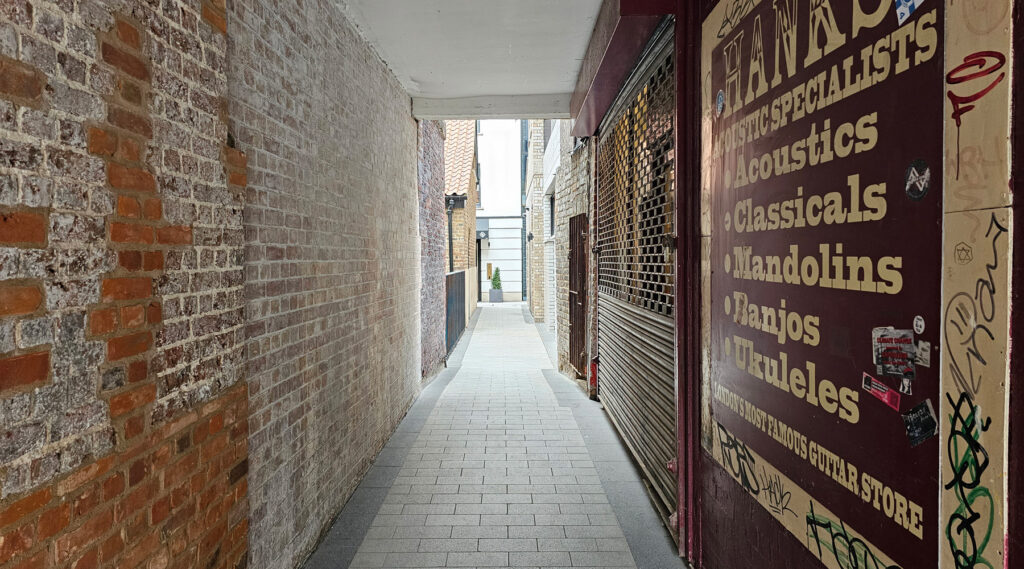
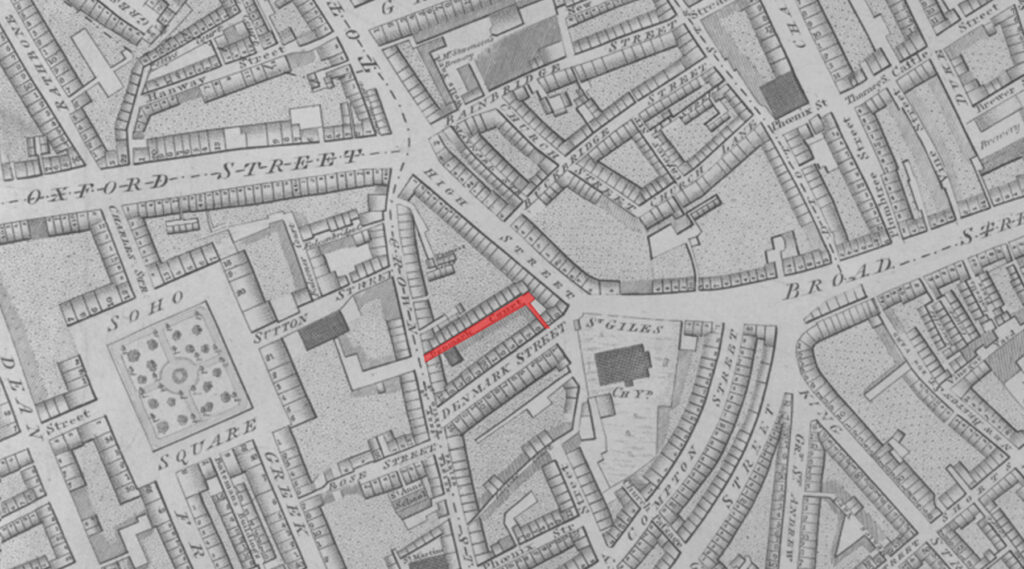
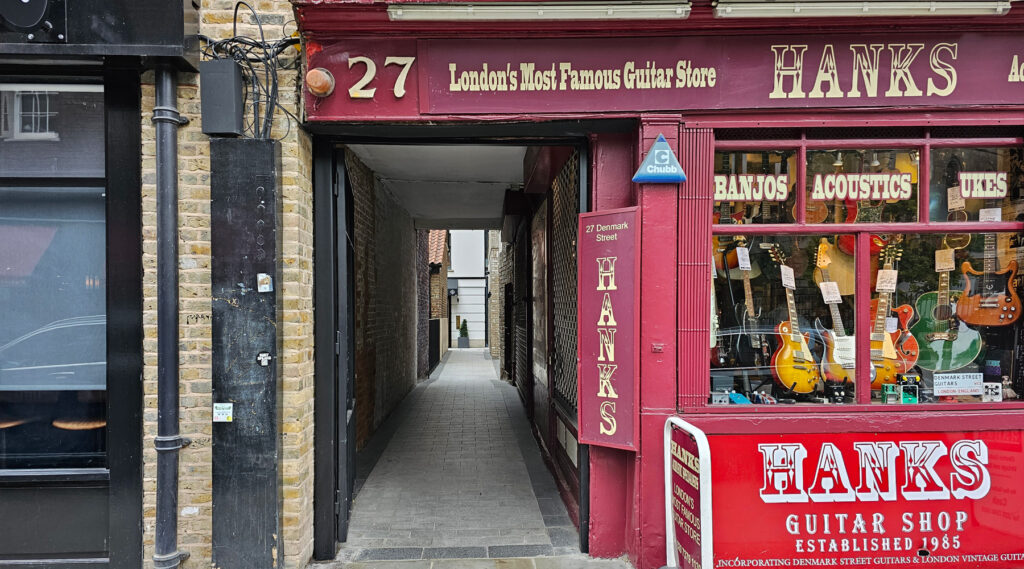
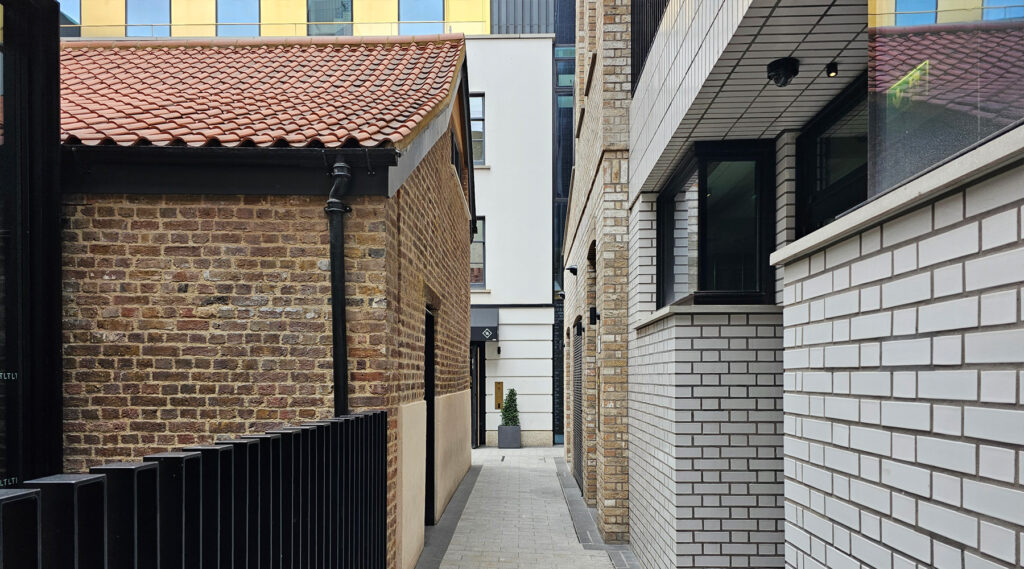
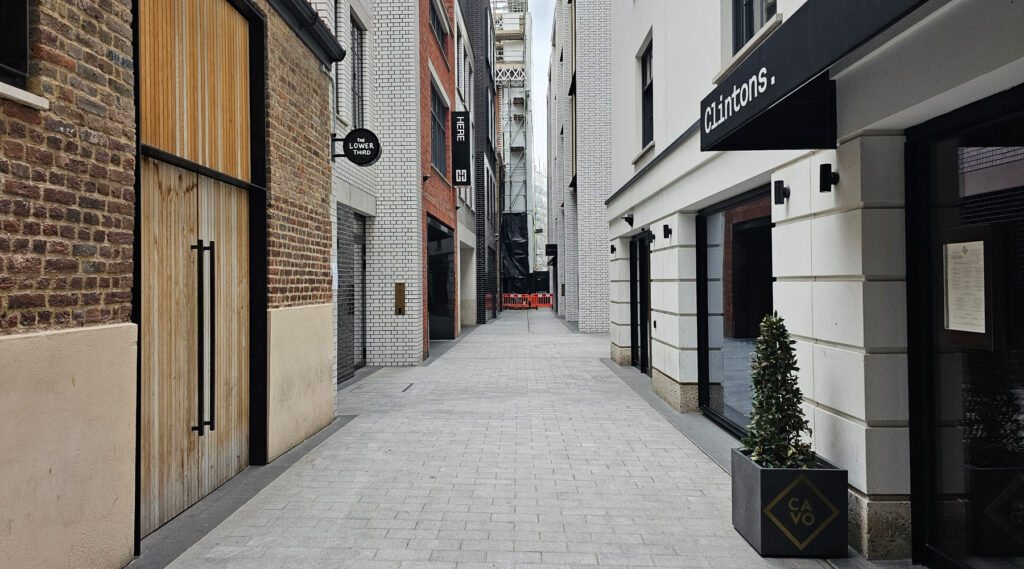
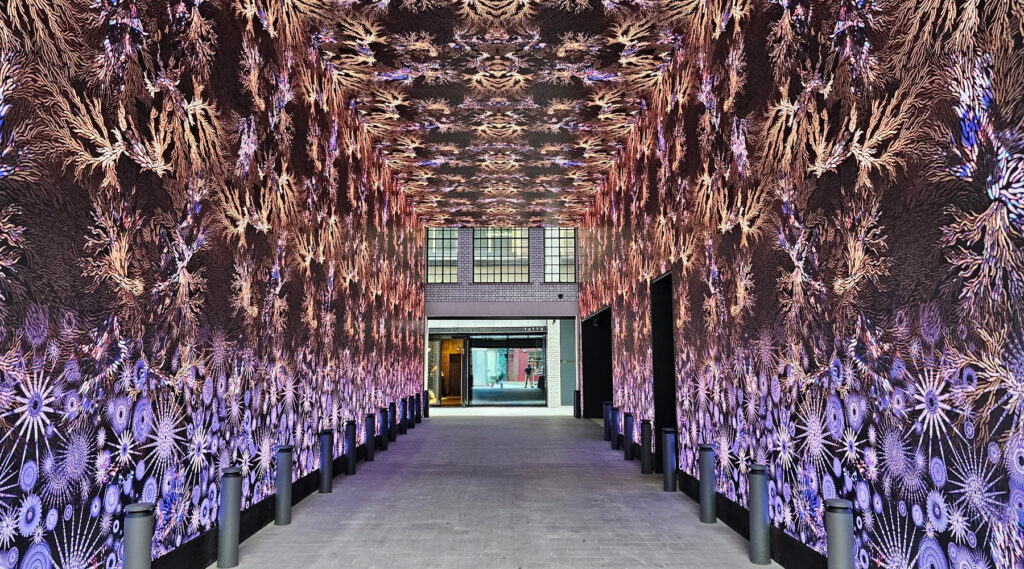
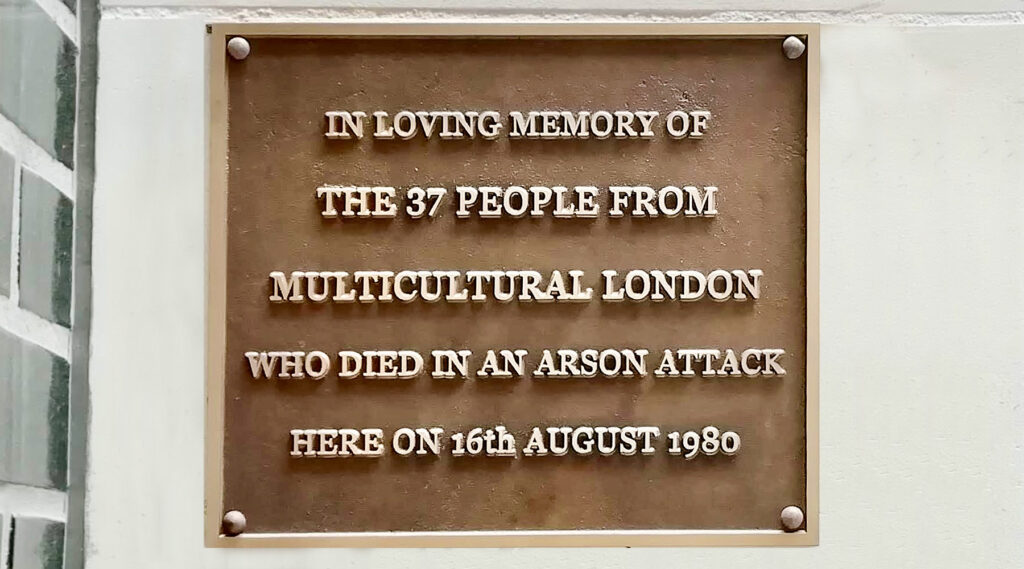






Fascinating old map. Oxford Street just stops where TCR is now, and all those little streets in its way have vanished.
The first episode of BBC’s History On The Edge is about the Denmark Place fire.
https://www.bbc.co.uk/sounds/play/m001p1l2?partner=uk.co.bbc&origin=share-mobile
Really enjoyed reading your article! Done a lot of work at Outernet/ Chateau Denmark over the past 3 years!
So Denmark Place no longer opens on to St Giles High Street?
I used to come here nearly every week when Forbidden Planet was on Denmark Street and Forbidden Planet 2 on St Giles High Street. But the main attraction for me was the LTS comic and sci-fi/fantasy book shop on Denmark Place just a few metres in from Denmark Street.
That must have been well hidden and unpublicised; I started visiting Denmark St for FP pretty much when it opened yet had/have never heard of that shop! The Outernet stuff is crass in the extreme – hideous, pointless and entirely unsuited to its site, albeit they have now demolished much of the nice period buildings that used to make it.
Yes… it is hideously ugly. The connection with Japan is interesting if you ever happen to visit Shibuya in TOKYO.
“The Forge” was a nice little live music venue and I had the pleasure of playing a show there in 1992…went back last year and it’s still there – in the back of the “Lower Third” Bar.
Thanks, interesting history.